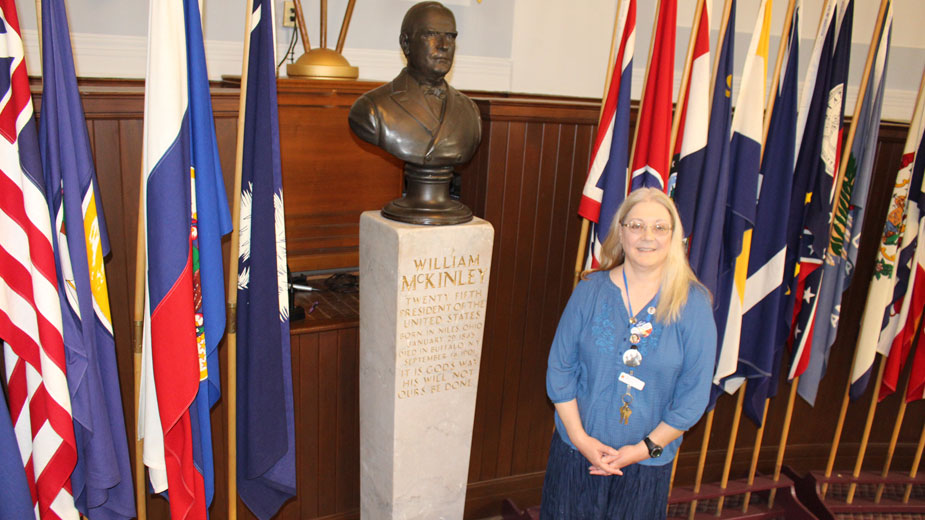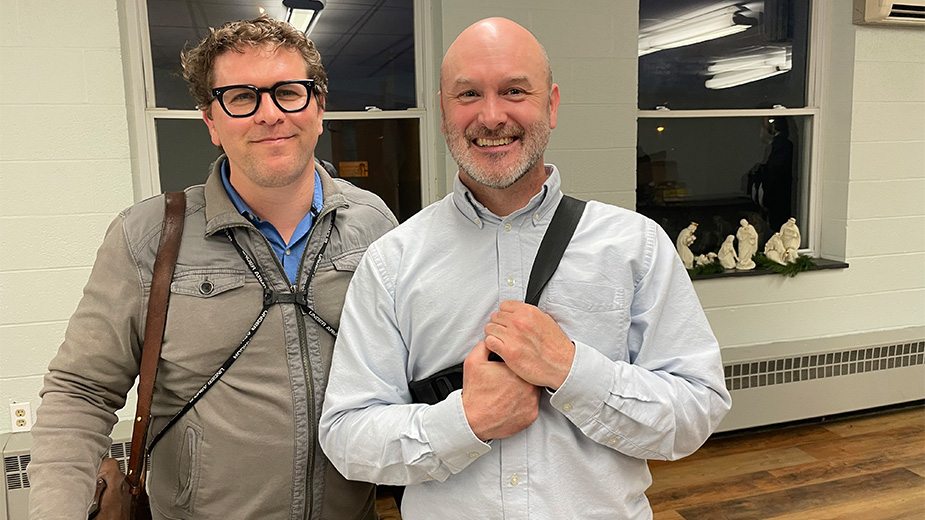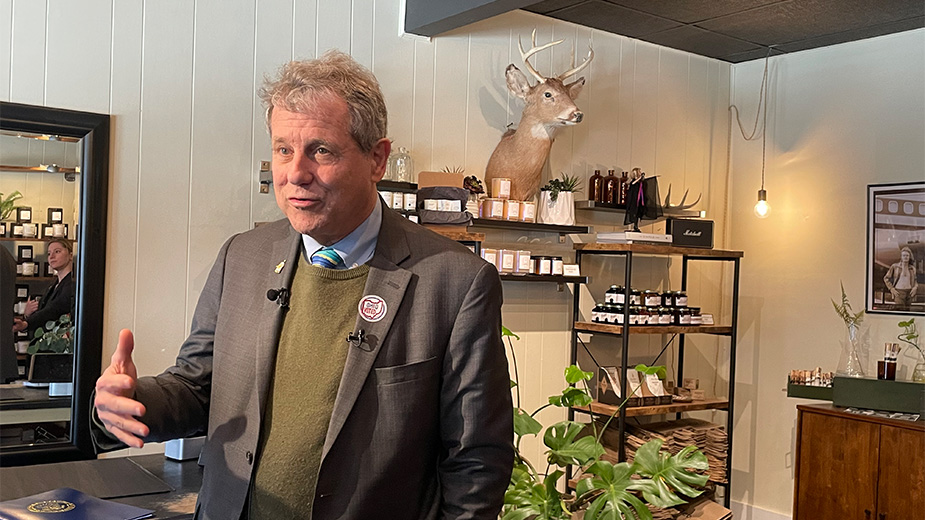McKinley Welcomes History Buffs to Niles
NILES, Ohio — On the evening of Feb. 4, 1910, the prominent Youngstown industrialist Joseph G. Butler Jr. was asked to address the Niles Board of Trade in what would normally have been a routine update on the health of the local business climate.
But this time, Butler’s speech was a different. During his talk, the iron and steel magnate made public a proposal that he had carried with him privately for several years, and that was to enlist the community in an effort to build a memorial to President William McKinley, assassinated nearly nine years earlier while attending the Pan American Exposition in Buffalo, N.Y.
McKinley and Butler were born in Niles and childhood friends, and both of their fathers were executives in the Mahoning Valley’s fledgling iron industry. It was only fitting that Butler – in 1910 one of the most influential industrialists in the country – use his influence to enlist the support of his close friends to build a structure dedicated to the memory of the slain president.
“Joseph Butler was key,” says Trish Scarmuzzi, curator of collections at what is today the National McKinley Birthplace Memorial and Museum in the center of Niles. “He was a lifelong friend of McKinley’s, and after his assassination Butler wanted a memorial – actually, the first presidential museum in the country – built here.”
Scarmuzzi says Butler worked on the effort more than a year before securing enough support to take the first step in moving forward on the project. On March 4, 1911, a special act of Congress granted a charter to the National McKinley Birthplace Memorial Association of which Butler was an officer.
That gave the organization the green light to raise money, and Butler knew personally a pantheon of industrial giants – among them Andrew Carnegie, Henry Clay Frick and Judge Elbert Gary, the chairman of U.S. Steel Corp. He was especially close with Frick, who gained notoriety in 1892 as the steward of Carnegie’s Homestead Mill near Pittsburgh during the violent clash between locked out workers and Pinkerton strikebreakers that summer.
“Frick was a friend of Joseph Butler, and Butler approached him at his home in New York,” Scarmuzzi says. Butler laid out his plan to honor McKinley with a memorial, which by this time had grown into a more ambitious project that included a library. “Frick asked, ‘How much?’ and Butler replied $50,000 – the equivalent of $1.5 million today,” she says. “They came to an agreement, Frick walked into his study, and wrote Butler a check for $50,000.” Later, Frick contributed 1,000 books toward the library.
As such, Frick is the largest single donor to the effort, Scarmuzzi says, emphasizing that the entire construction and operation of the building was then – and is today – funded by private sources. “We’ve never taken a dime of government money. We’re the only privately funded presidential museum in the country,” she says.
In addition to Frick, Butler reached out to other industrial leaders and past political supporters of McKinley. “He promised donors who gave more than $1,000 a marble bust,” Scarmuzzi says. As a result, more than 40 busts created by sculptor J. Massy Rhind stand inside the museum’s open assembly space and circle the large statue of McKinley in the pristine marble outdoor “court of honor.”
In the courtyard, the statue of McKinley is flanked by likenesses of his cabinet members and ardent political supporters. Among them are Theodore Roosevelt, elected vice president with McKinley in 1901 and his successor in the White House; Elihu Root, secretary of war; John Hay, secretary of state; President William Howard Taft; and industrialist Marcus Hanna, a native of Lisbon, Ohio and former U.S. senator. Frick’s bust stands by itself in the lobby of the library.
Inside the assembly area are busts of Andrew Carnegie; Elbert Henry Gary; George Westinghouse, inventor of the airbrake; Youngstown’s David Tod, who served as governor of Ohio during the Civil War; and financier Andrew W. Mellon.
A significant amount of money was raised through the sale of $1 gold coins, which reflected McKinley’s support of the gold standard, Scarmuzzi says. “They sold for $3 apiece – $2.50 if you bought 10,” she says. “This wasn’t just funded by the wealthy. You could be a common person and support it.” In all, the building cost nearly $500,000 to construct.
Design of the memorial was awarded through a blind competition, Scarmuzzi says, and the firm of McKim, Meade and White was selected. The same firm was used by Theodore Roosevelt to renovate the White House, and in 1919, commissioned to design the Butler Institute of American Art in Youngstown, also built by Joseph G. Butler.
“It became part of the City Beautiful program,” she says, a nationwide effort to encourage cities to build parks and recreational areas. The memorial’s design consisted of an open-air garden and Court of Honor supported by 28 columns made of Georgia marble, where the statue of McKinley is centered. The court is flanked by two wings – the southern wing, dedicated to a public library and the northern wing, which houses the assembly hall and museum.
A groundbreaking ceremony was held Sept. 9, 1915, and the new memorial was dedicated Nov. 5, 1917.
To this day, the library and museum is funded through an endowment and has recently taken initiatives to encourage community interest in the life of the slain president as the building nears its centennial next year, says board member Dave Snyder.
“We now have a curator and an assistant curator. We’d like to get more people through the doors,” he says.
The museum’s educational programs are a great way to bring history alive, Snyder says, especially to young people. “Seeing exhibits can help kids visualize things and give them a hands-on experience as opposed to just reading a book.”
Among the exhibits new to the museum this year are cases devoted to McKinley’s boyhood, his service during the Civil War, the Spanish-American War during his tenure as president, and his assassination.
“We have a lot of political memorabilia,” Scarmuzzi says. The second floor of the assembly hall houses McKinley’s desk that he used as an attorney in Canton and a chair where he, when president, sat when he met with his cabinet. Other items include paintings, photographs and some of McKinley’s letters.
The case exhibits were designed and created by students enrolled in Youngstown State University’s museum curatorial program, says Marcelle Wilson, an adjunct professor of history at YSU.
Last spring, students in Wilson’s Curation 2 class put together the new exhibits on display. About two years earlier, another YSU curatorial class designed the exhibits that feature the elections of 1896 and 1900.
“We’ve worked with them in the past, and like to stay local and build ties with different organizations,” Wilson says of the museum. With the cooperation of the McKinley Memorial, students created a museum exhibit from the ground up – everything from conducting research, writing text, graphics and promotions. “It gives them the practical experience on how to create an exhibit from start to finish,” she says.
Scarmuzzi believes McKinley is often given short shrift in U.S. history because his successor, Theodore Roosevelt, had such a dynamic personality. Moreover, she would like to attract more people to what she thinks is one of the most beautiful landmarks in the Mahoning Valley. “I think a lot of people need reminded,” she says. “We get visitors from out of state – but a lot of people who’ve lived here all of their lives haven’t been here.”
Pictured: Trish Scarmuzzi is the curator of collections at the McKinley Memorial and Museum.
Copyright 2024 The Business Journal, Youngstown, Ohio.



